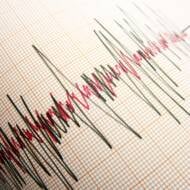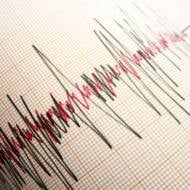
Groundbreaking Seismic Research Tracks Hamas Vehicle Movements Prior to October 7 Attack

Research marks first documented case of human-induced seismic noise linked to preparations for an act of terror, highlighting seismic technology’s potential for warning of impending threats.
By Pesach Benson, TPS
Israeli scientists revealed on Thursday seismic data showing unusual vehicular activity by Hamas forces on the morning of their deadly October 7, attack. The research marks the first documented case of human-induced seismic noise linked to preparations for an act of terror, highlighting the potential of seismic technology to provide early warnings of impending threats.
The study, led by Tel Aviv University’s Dr. Asaf Inbal utilized seismic data from three stations in southern Israel. These stations detected faint ground motions attributed to the movement of heavy vehicles—tractors, bulldozers, and trucks—within the Gaza Strip shortly before the attack. The team’s findings were published on Wednesday in The Seismic Record, a peer-reviewed journal.
Inbal stressed that the data was analyzed after the attack. For real-time applications, advancements in data processing, machine learning, and integration with other surveillance systems are essential.
The researchers called their findings a breakthrough in forensic seismology. Seismology is the scientific study of seismic waves and the Earth’s internal structure. It focuses on understanding natural phenomena like earthquakes, volcanic activity, and tectonic movements.
Lesser-known forensic seismology is a specialized subset of seismology that applies seismic techniques to investigate human-made activities, often for security, legal, or investigative purposes. It focuses on identifying and analyzing seismic signals caused by events like explosions, construction, or the movement of heavy vehicles. Forensic seismology is typically used to track activities that may be hidden or difficult to detect through traditional means, such as terrorist attacks, industrial accidents, or illegal operations.
At around 6:00 AM on October 7, seismic stations operated by the Israeli Geological Survey in Amazia, Ktsiot, and Yatir — located 30-50 kilometers from Gaza — began detecting unusual noise. This activity intensified over the next half-hour.
“We have good resolution along Salah al-Din Road, a major thoroughfare crossing Gaza from Rafah in the south to Beit Lahia in the north. We can confirm with high certainty that their forces moved along this route at speeds of 25 to 50 km/h,” Inbal said.
“Observations from stations dozens of kilometers from Gaza’s border indicate convoys of heavy vehicles such as bulldozers and trucks carrying operatives. Three minutes before the attack began, we detected noise sources reaching the northern end of Gaza near Beit Lahia and the southern end near Khan Yunis. At the same time, we continued receiving signals from central Gaza, near Nuseirat. We know the assault began almost simultaneously along the entire border, so these seismic observations provide further evidence of the extensive deployment of Hamas forces, likely enabling the simultaneous breach of the ground barrier,” he added.
Further analysis excluded other potential sources, such as local activity in Israel or seismic noise from the Nova music festival at Kibbutz Reim, emphasizing the distinct pattern and timing of the detected signals.
Inbal explained that seismic networks, primarily designed to detect earthquakes, are sensitive enough to pick up ground motions as small as tens of nanometers per second — far below the threshold perceptible by humans. The quiet conditions of that morning in southern Israel, when local seismic noise was minimal, provided an ideal backdrop for detecting these weak signals.
By analyzing three years of data from the same stations, researchers confirmed the anomalous nature of the October 7 signals. “On previous Saturdays, there was no correlation in seismic noise across these stations,” Inbal explained. “This was a unique event.”
At least 1,200 people were killed, and 252 Israelis and foreigners were taken hostage in Hamas’s attacks on Israeli communities near the Gaza border on October 7. Of the 97 remaining hostages, more than 30 have been declared dead. Hamas has also been holding captive two Israeli civilians since 2014 and 2015, and the bodies of two soldiers killed in 2014.
Do You Love Israel? Make a Donation – Show Your Support!
Donate to vital charities that help protect Israeli citizens and inspire millions around the world to support Israel too!
Now more than ever, Israel needs your help to fight and win the war — including on the battlefield of public opinion.
Antisemitism, anti-Israel bias and boycotts are out of control. Israel’s enemies are inciting terror and violence against innocent Israelis and Jews around the world. Help us fight back!
The post Groundbreaking Seismic Research Tracks Hamas Vehicle Movements Prior to October 7 Attack first appeared on United with Israel.
United with Israel